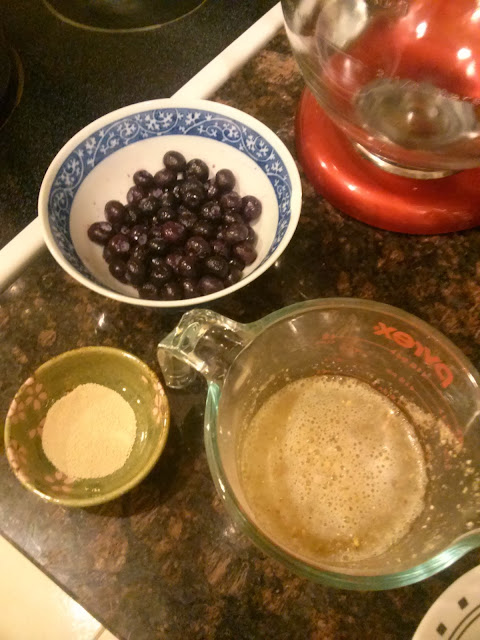Blueberry Makgeolli [블루베리 막걸리]

This was my first attempt at adding fruit into the brewing process. I added 150 g of blueberries to a brew with the following ratio: 500 g rice 1 liter water 50 g nuruk 3 g yeast The goal of this test batch was first and foremost to prove that it could be done. 150 g of frozen blueberries were washed and thawed to room temperature. Then, the berries were added to the brew at the same time as the yeast and hydrated nuruk (sugok). The mixture was mixed by hand for about 30 minutes before being covered and placed in a dark cabinet at 75 degrees F. The pictures are in chronological order. This batch yielded about 48 ounces of concentrated blueberry makgeolli. Upon tasting it was obvious that this was makgeolli, but the blueberry was not so obvious. Aside from the light pink hue and a gentle aroma, there wasn't a strong indication that this was brewed with blueberries. I'll let it age for a few days in the bottle and



